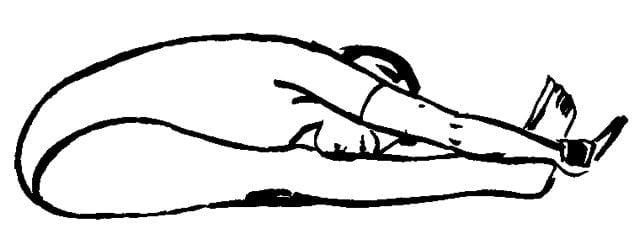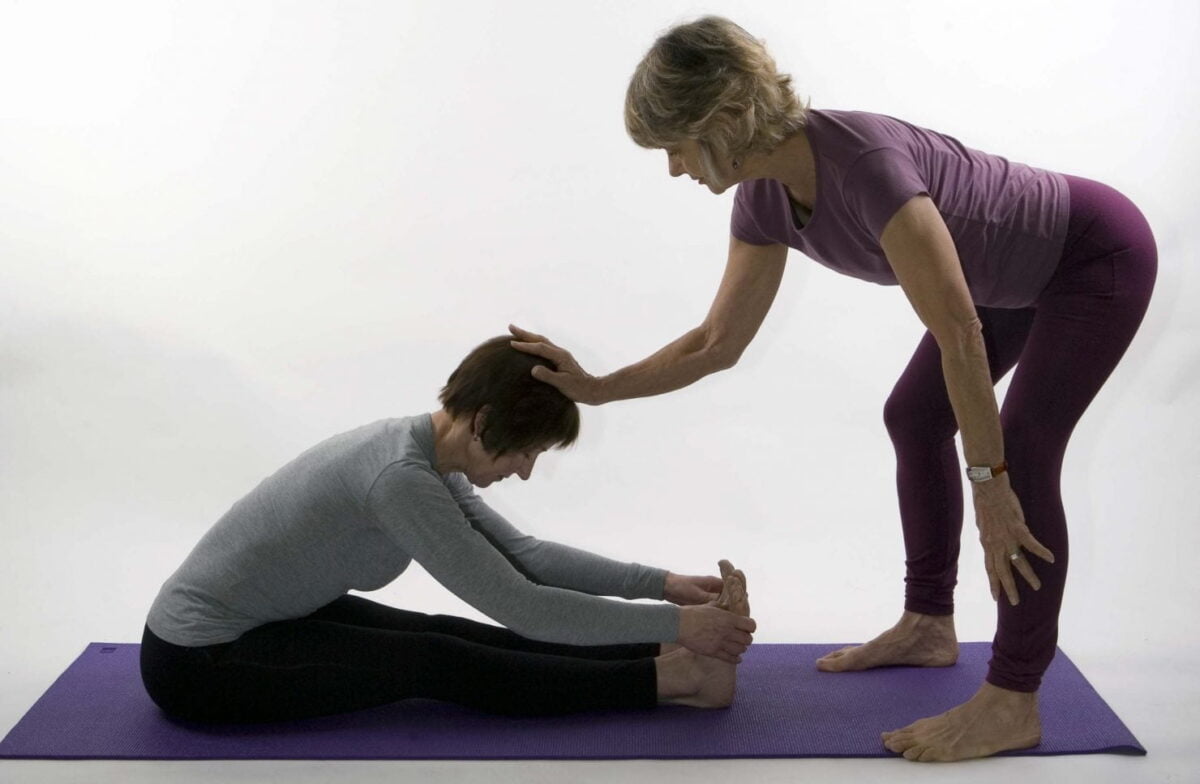
Paschimottanasana
Forward bends can be the bane of some yogis lives, especially if you are in a class and you see supple-bodied people seemingly fall into these sorts of poses with the utmost ease.
In my book, Teach Yourself Yoga, I talk about how my difficulties with forward bends eventually helped me understand what yoga is about:
When I started yoga, I experienced great waves of frustration and sadness, whenever I performed a sequence of the seated forward bends. Sometimes I would finish a session crying. No one had explained to me that emotional discomfort could arise while doing yoga. Part of my upset related to discomfort I experienced as I challenged my very tight hamstrings. However, I recognised that there were other situations in my life where I would characteristically collapse in despair when presented with a tough challenge. Dealing with this familiar pattern when it came up in my practice eventually helped me deal with it in my life outside yoga time….When discomfort arises, you have the opportunity to strengthen ‘the observer’, the part of yourself that watches you practice…. Detached observation of your feelings will often calm them. If feelings of futility arise about poses that are difficult, put the emphasis on what you are able to do and don’t give up. My teacher used to correct me when I bemoaned the fact that I couldn’t do forward bends by saying to me, ‘You can’t do them yet!’. Eventually I moved from a belief that I would never be able to do the poses to ‘I’ll give it a go’ and, finally, to ‘Yes, I can’.
Paschimottanasana is a challenging pose to practice if you have wobbly hamstrings, stiff back muscles or a back injury or condition. It’s said that the forward bend family of poses is there for us to learn humility. That was certainly true for me. I feel I’m still learning that lesson each time I do the pose, particularly as I now have restricted hip flexion since having hip surgery. There’s no room any more for me to be the show-off I once was.
As a yoga teacher, you may find it frustrating to see students push themselves beyond their limits to hold onto their feet or get as low as possible to their legs. Bad posture in this pose usually means that the back body shows up like a tortoise shell and the front chest like a cavern, creating much tension and pressure on one’s heart.
Here’s a photo from an e-book of mine, The Art of Adjustment, that shows a simple adjustment that can create a feeling of lift, opening, and lengthening for your student:

Paschimottanasana Adjustment
The beauty of the pose when it is open and light is that it can be held for longer timings, perhaps five minutes or so. Resting one’s head on a chair or on a bolster is a useful approach to make Paschimottanasana more user-friendly.
Remember, though, that any props you use are not necessarily to make the pose easier, but rather to allow you to become still and be more watchful. This is the recipe for fostering equanimity.

0 Comments